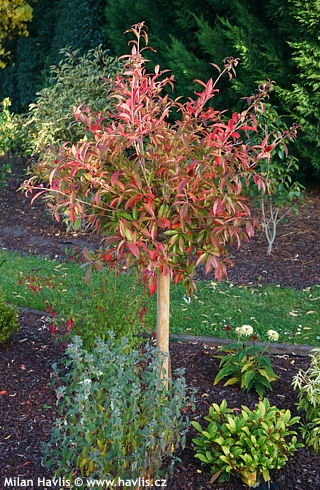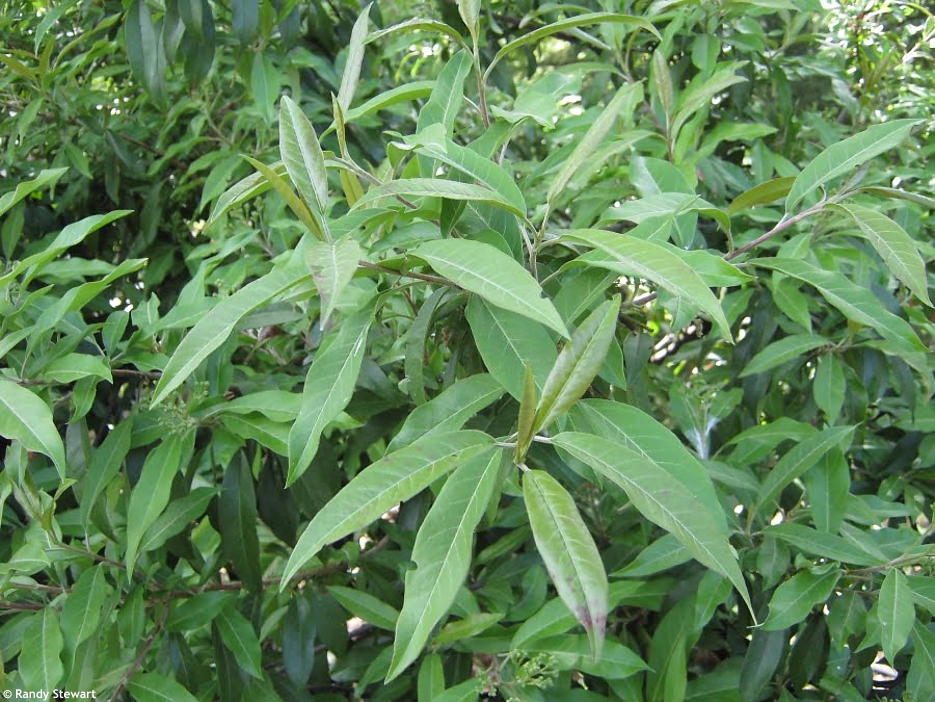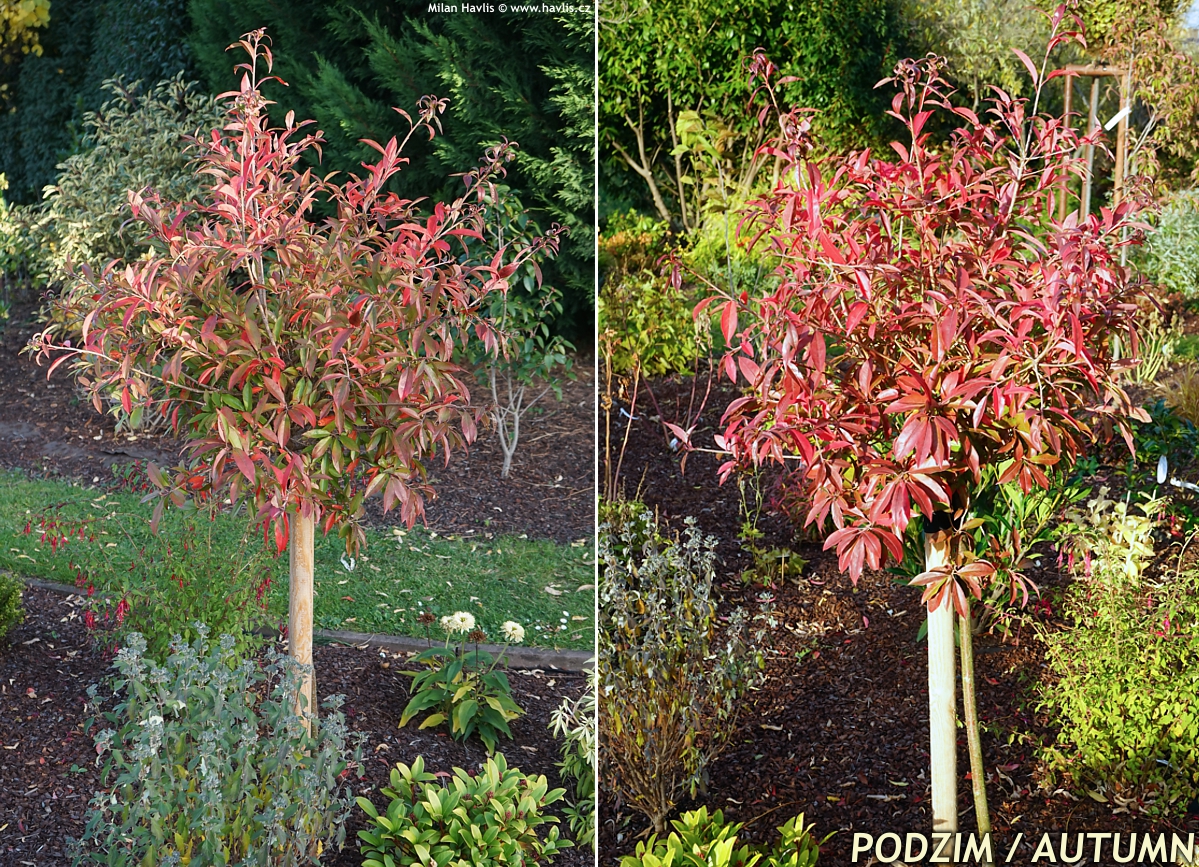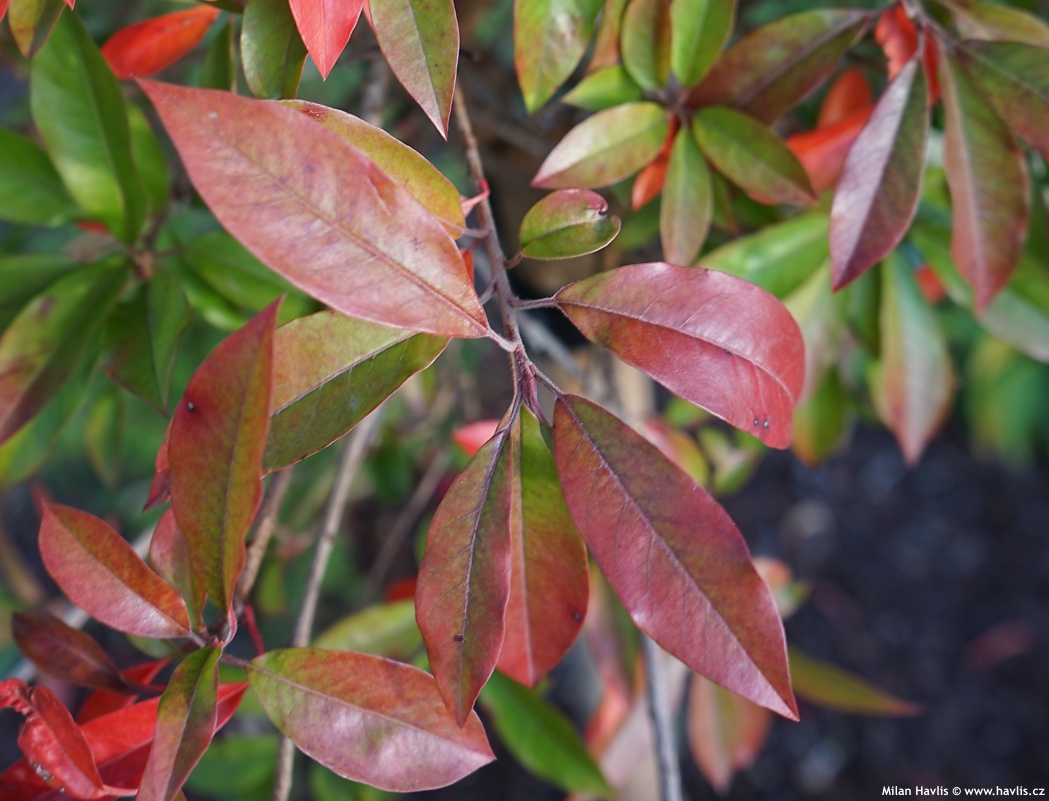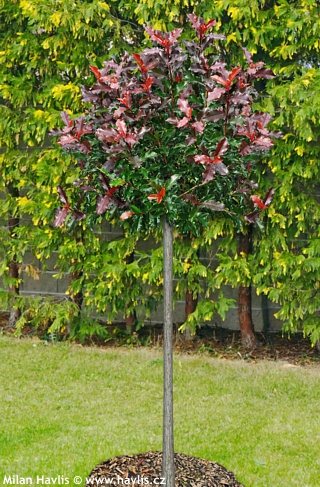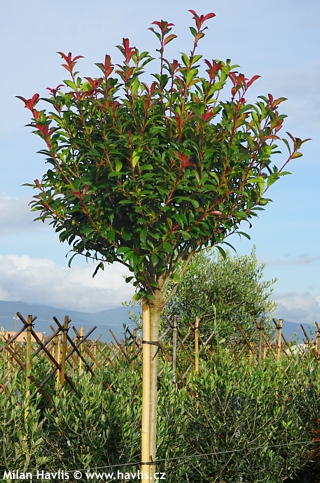Photinia davidiana (Stranvaesia davidiana) var. undulata David's photinia, Chinese stranvaesia - STANDARD TREE
Photinia
The species of Chinese photinia (formerly stranvaesia), also called David’s photinia, is an evergreen shrub whose close relative is a garden hybrid photinia Red Robin. It comes from China and Vietnam and has better cold resistance and narrower leaves.
undulata is a natural variety of Chinese photinia with slightly wavy leaf margins. Its evergreen leaves are narrowly lance-shaped to elliptic, acuminate, deep green, and glossy. They emerge coppery red in spring, and in autumn turn fantastic tones of crimson, scarlet red, and even maroon. In late spring appear clusters of small white flowers which are followed by very showy scarlet red fruit (neither edible nor poisonous).
It grows fast, making thin and flexible twigs when young. Young plants are almost upright in growth and open their canopies later when the branches become too heavy, changing the habit to rather prostrate or arching. But regularly pruned plants bush out beautifully and exhibit dense and attractive framework. The best time to prune it is in early spring after all frosts. Light trimming is possible in midsummer if some branches get out of hand.
Tree forms of evergreen woody plants are becoming more and more popular. They can offer good screening at a desirable height blocking views from neighbouring windows if privacy is why you look for an evergreen tree. As every standard tree it needs a good support to protect the stem from moving, especially in wind. It can be removed after 3 years if the tree is established well. There is usually a bamboo stick attached to the tree trunk when you buy the plant. It needs to be removed before you tie the stem into your new support.
Grow it in full sun, in acidic, moist but well drained soil with high contents of organic matter. Mulching provides consistent moisture throughout the year and is necessary in colder areas. Watering is recommended before and during winter unless the soil is frozen. Hardy to about -29 °C (USDA zone 5), and suitable for year-round growing in outdoor pots.
Last update 21-02-2022

































